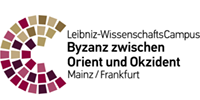The Short Life of an imperial city - daily life, environment and fall of the early byzantine city Caričin Grad (Iustiniana Prima?)
The site of Caričin Grad in south-eastern Serbia – currently listed on UNESCO’s tentative list – has been the subject of archaeological investigations for more than 100 years. In 2014, the Römisch - Germanisches Zentralmuseum Mainz initiated a research project in cooperation with the Institute of Archaeology, Belgrade and the École française de Rome.
The remains of the early byzantine complex of Caričin Grad show the features of a city built in the classical, hellenistic-roman tradition, while at the same time being characterised by a particularly prominent presence of ecclesiastical architecture.
Based on the comparison of byzantine text sources with the settlement’s topography and its architecture, Caričin Grad is supposed to be identical to Iustiniana Prima, a city newly founded by the emperor Justinian as the region’s episcopal and administrative centre.
With the period of occupation covering a mere 90 years, from circa 530 to circa 615 AD, the site allows a rare archaeological ’snapshot’ of a short period of very intensive use, which furthermore remained undisturbed from later encroachments.
Due to these circumstances, Caričin Grad offers the unique opportunity to analyse a city at the turn of the late antique era to the early medieval epoch and the complex issues associated with periods of cultural transition under ideal archaeological conditions.
Therefore, the projects main objective is to reconstruct different aspects of the city’s economic, environmental and social history.
Two main topics will be addressed within this context. ’Households, consumption and every day life’ will be dealing with domestic units concerning consumption, methods of production and activity zones regarding comestible goods.
’Resources for building and maintaining Caričin Grad’ will analyse the resources available in the Caričin Grad area, estimate the amount of material needed for the construction of the city based on an existing 3D reconstruction; leading to an overall perspective on the city’s resource management and methods of maintenance.
In addition, the prospection of geoarchives and a revision of agricultural devices typical for the region and time period aim at a reconstruction of the rural economy with a special focus on horticulture.
Eventually, a reconstruction of Caričin Grad in particular and the concept of ’city’ in general as interdependent parts of environment and society - in short human ecology - will evolve.
The project will therefore provide a scientific perspective on environmental history which by far extends its actual duration and regional focus.
Funding
<link www.leibniz-gemeinschaft.de - - "Opens external link in new window">Leibniz-Gemeinschaft</link>
Publications
- Baron/Reuter/Marković 2019: H. Baron / A. E. Reuter / N. Marković, Rethinking Ruralization in Terms of Resilience: Subsistence Strategies in Sixth-Century Caričin Grad in the Light of Plant and Animal Bone Finds. Quaternary International 499A, 2.1.2019, Special Issue: Food Production and Land Use, ed. F. Pigière, Oe. Akeret, M. Kühn. 112-128.
- Bavant 2008: B. Bavant, Fragments de casques de type Baldenheim trouvés à Caričin Grad. Mélanges de l’École Français de Rome, Moyen Âge 120, 2, 2008, 327-353
- Bavant/Ivanišević 2007: B. Bavant/V. Ivanišević, Iustiniana Prima (Caričin Grad) – Eine spätantike Stadt vom Reißbrett. In: U. Brandl/M. Vasić (Hrsg.), Roms Erbe auf dem Balkan (Mainz 2007) 108-129.
- Bavant/Ivanišević 2006: B. Bavant/V. Ivanišević, Iustiniana Prima – Caričin Grad (Leskovac 2006).
- Bavant/Ivanišević 2003: B. Bavant/V. Ivanišević, Iustiniana Prima – Caričin Grad (Beograd 2003).
- Bavant/Kondić/Spieser 1990: B. Bavant/V. Kondić/J.-M. Spieser (Hrsg.), Caričin Grad II. Le quartier sud-ouest de la Ville Haute. Collection de l’Ècole Français de Rome 75,2 (Belgrade/Rome 1990).
- Bekić/Ivanišević 2012: V. Bekić/V. Ivanišević, Imported pottery in central Illyricum – a case study: Caričin Grad (Iustiniana Prima). In: Rei Cretariae Romanae Fautorum Acta 42 (Bonn 2012) 41-49
- Birk/Bugarski/Fiedler et. al. 2016: J. J. Birk / I. Bugarski / S. Fiedler / V. Ivanišević / H. Kroll / N. Marković / A. Reuter / C. Röhl / R. Schreg / A. Stamenković / S. Stamenković / M. Steinborn, An Imperial Town in a Time of Transition. Life, Environment, and Decline of Early Byzantine Caričin Grad. Proceedings of the 3rd International Landscape Archaeology Conference, 2014 (2016) lac2014proceedings.nl
- Drauschke/Greiff 2010: J. Drauschke/S. Greiff, Chemical aspects of Byzantine glass from Caričin Grad / Iustiniana Prima (Serbia). In: J. Drauschke/D. Keller (Hrsg.), Glass in Byzantium – Production, usage, analyses. Tagung Mainz 2008. RGZM Tagungen 8 (Mainz 2010) 25-46
- Duval/Popović 2010: N. Duval/V. Popović (Hrsg.), Caričin Grad III. L’acropole et ses monuments. Collection de l’Ècole Français de Rome 75,3 (Rome, Belgrade 2010).
- Duval/Popović 1984: N. Duval/V. Popović (Hrsg.), Caričin Grad I. Les basiliques B et J de Caričin Grad, Quatre objets remarquables de Caričin Grad, Le trésor de Hajdučka Vodenica. Collection de l’Ècole Français de Rome 75,1 (Belgrade/Rome 1984).
- Ivanišević 2012: V. Ivanišević, Barbarian settlements in the interior of Illyricum: The case of Caričin Grad. In: V. Ivanišević/M. Kazanski (Hrsg.), The Pontic-Danubian Realm in the period of the Great Migration. Centre de Recherche d’Histoire et civilisation de Byzance, Monographies 36 (Paris, Beograd 2012) 57-69.
- Ivanišević 2010: V. Ivanišević, Caričin Grad – The fortifications and the intramural housing in the lower town. In: F. Daim/J. Drauschke (Hrsg.), Byzanz – das Römerreich im Mittelalter. Monographien des RGZM 84,2,2 (Mainz 2010) 747-775.
- Ivanišević/Stamenković 2010: V. Ivanišević/S. Stamenković, „Glass“ workshop from Caričin Grad (Iustiniana Prima). In: B. Zorn/A. Hilgner (Hrsg.), Glass along the Silk Road from 200 BC to AD 1000. Konferenz Mainz 2008. RGZM Tagungen 9 (Mainz 2010) 39-52
- Jeremić 2007: M. Jeremić, The Caričin Grad necropolis. Starinar 46/46, 1994/95, 181-195; B. Bavant, Caričin Grad and the changes in the nature of urbanism in the Central Balkans in the sixth century. In: A. G. Poulter (Hrsg.), The transition to Late Antiquity on the Danube and beyond. Symposium British Academy 2003. Proc. Brit. Acad. 141 (Oxford 2007) 337-374
- Kondić/Popović 1977: V. Kondić/V. Popović, Caričin Grad. Site fortifié dans L’Illyricum byzantin. Galerija Srpske Akademije Nauka i Umetnosti 33 (Beograd 1977).
- Mandić 1962: N. Mandić (Red.), Caričin Grad 1912-1962. Bibliografija (Beograd 1962)
- Rakić 1880: M. Rakić, Iz nove Srbije. Otadžbina IV (Beograd 1880).
- Schreg/Birk/Fiedler et. al. 1999: R. Schreg / J. J. Birk / S. Fiedler / H. Kroll / N. Marković / A. E. Reuter / C. Röhl / M. Steinborn, Wirtschaftliche Ressourcen und soziales Kapital. Gründung und Unterhalt der Kaiserstadt Iustiniana Prima. Mitt. DGAMN 29, 2016, 9-20.
- Snively 1999: C. S. Snively, s. v. Iustiniana Prima (Caričin Grad). In: Reallexikon für Antike und Christentum, fasc. 149-150 (Stuttgart 1999) Sp. 638-668.
- Steinborn/Baron/Reuter et. al. 2018: M. Steinborn/H. Baron/A. E. Reuter/J. Birk/S. Fiedler/C. Röhl/R. Schreg, Vom Glanz des Kaisers und dem Dreck der Strasse. Interdisziplinäre Forschungen zum Alltag der frühbyzantinischen Kaiserstadt Iustiniana Prima, in: Antike Welt 4 (2018) 8-13.
- Verweise auf Vorberichte auch in den Bibliographien von Kondić/Popović 1977, 231 ff.; Bavant/Ivanisević 2003, 83 ff.
- B. Bavant/V. Kondić/J.-M. Spieser, in: Mélanges de l’École Français de Rome, Moyen Âge 97, 1985, 883-887; 98, 1986, 1177-1181; 101, 1989, 327-332; 102, 1990, 277-282; 103, 1991, 442-448. – B. Bavant/V. Ivanišević, in: Mélanges de l’École Français de Rome, Moyen Âge 109, 1997, 645-651; 110, 1998, 973-976; 112,2, 2000, 1087-1094; 113,2, 2001, 963-969; 114,2, 2002, 1095-1102; 115,2, 2003, 1021-1027; 117,2, 2005, 791-796; 118,2, 2006, 387-394; 120,2 2008, 443-451.
Related Projects
Team
- Dr. Henriette Baron
- Dipl. Prähist. Anna Reuter
Partners
- Archäologisches Institut Belgrad/SRB: Dr. Vujadin Ivanišević
- École française de Rome (EFR), Rom: Dr. Bernard Bavant
- Christian-Albrechts-Universität zu Kiel, Institut für Ur- und Frühgeschichte: Prof. Dr. Wiebke Kirleis
- Johannes Gutenberg-Universität Mainz, Geographisches Institut; Prof. Dr. Sabine Fiedler, Dr. Jago J. Birk
- Hochschule Mainz, i3mainz - Institut für Raumbezogene Informations- und Messtechnik: Prof. Dr. Kai-Christian Bruhn, Guido Heinz M.Eng.
- Zentrum für Baltische und Skandinavische Archäologie in der Stiftung Schleswig-Holsteinische Landesmuseen Schloss Gottorf
- Deutsches Bergbau-Museum, Bochum
- Österreichische Akademie der Wissenschaften, Institut für Mittelalterforschung, Abteilung Byzanzforschung: Priv.-Doz. Mag. Dr. Mihailo Popović
- Ludwig Boltzmann-Institut für Archäologische Prospektion und Virtuelle Archäologie/AT: Prof. Dr. Wolfgang Neubauer
- Institut für Klinische Molekularbiologie der Christian-Albrechts-Universität Kiel, Prof. Dr. Ben Krause-Kyora
- DMT GmbH und Co.KG, Essen
- UDATA - Umwelt und Bildung: Dr. Markus Dotterweich
weiterführende Links
- UNESCO Caričin Grad – Iustiniana Prima, archaeological site
- "Die letzte antike Stadt", Beitrag vom 17. Oktober 2012 auf dem Archaeologik-Blog
- RGZM-Projekt: Archäologische Beiträge zur Umweltforschung
- RGZM-Projekt: Produktion und Distribution von Glas in frühbyzantinischer Zeit - Analyse der Glasfunde aus Caričin Grad/Iustiniana Prima (Serbien)
- Caričin Grad (Serbie), Archéologie et Histoire ancienne: Mediterranée-Europe
- Projektseite "Justiniana Prima" (Archäologisches Institut, Belgrad) mit einem Youtube-Film (3D-Rekonstruktion)








![[Translate to Englisch:] [Translate to Englisch:]](/fileadmin/_processed_/2/6/csm_Caricin_Grad_Baron_Abb.1_00d991dcbb.jpg)
![[Translate to Englisch:] [Translate to Englisch:]](/fileadmin/_processed_/2/0/csm_Caricin_Grad_Baron_Abb.2_6c630929b0.jpg)
![[Translate to Englisch:] [Translate to Englisch:]](/fileadmin/_processed_/e/4/csm_Caricin_Grad_Baron_Abb.3_c2856b5de3.jpg)
![[Translate to Englisch:] [Translate to Englisch:]](/fileadmin/_processed_/6/c/csm_Caricin_Grad_Baron_Abb.4_25b4cc1bc3.jpg)
![[Translate to Englisch:] [Translate to Englisch:]](/fileadmin/_processed_/8/b/csm_Caricin_Grad_Baron_Abb.5_36221e4e52.jpg)
![[Translate to Englisch:] [Translate to Englisch:]](/fileadmin/_processed_/7/8/csm_Caricin_Grad_Baron_Abb.6_ba2f8b314f.jpg)




